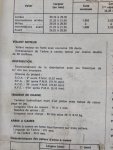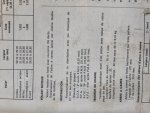Ah, my experience with the pushrod engine is 404/504; didn't know they'd abandoned the index hole. Well, it's not likely that the marks on the case are off by much if at all. Didn't mean any offence on which timing mark -- it was just a remote possibility.
There's very little active in the carby when you shut the throttle. The air flow is cut and fuel should only be coming through the idle jet. If extra fuel is being drawn in somewhere else, that wouldn't usually tend to cause backfiring. Extra AIR being drawn in might though. Just perhaps, the higher vacuum of overrun means air is drawn in at (say) the carburettor base, but when engine speed drops and the vacuum eases, it can no longer draw the air in, so you still get a decent idle. I guess it might be worth looking for vacuum leaks after all -- but I feel I'm clutching at straws.
Have fun,
Rob.
There's very little active in the carby when you shut the throttle. The air flow is cut and fuel should only be coming through the idle jet. If extra fuel is being drawn in somewhere else, that wouldn't usually tend to cause backfiring. Extra AIR being drawn in might though. Just perhaps, the higher vacuum of overrun means air is drawn in at (say) the carburettor base, but when engine speed drops and the vacuum eases, it can no longer draw the air in, so you still get a decent idle. I guess it might be worth looking for vacuum leaks after all -- but I feel I'm clutching at straws.
Have fun,
Rob.


